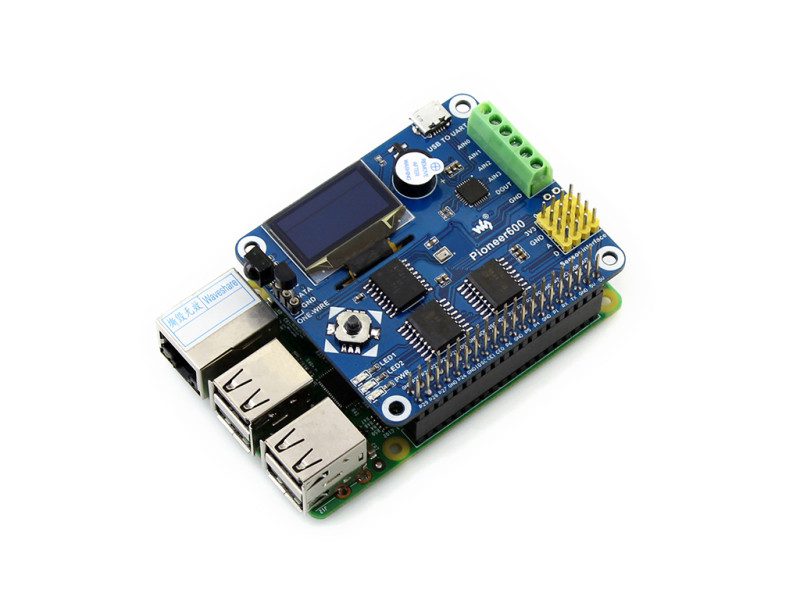
First of these features we noticed was a five-way joystick and 0.96-inch OLED display. This is backed up by a dual-LED and buzzer. On closer inspection, we discovered the on-board LFN0038K to enable remote control. A DS3231 real-time clock is also included (you’ll need to supply your own battery).
There is a built-in BMP280 for measuring air pressure and temperature, but it’s the available ports for external sensors that are the key attraction: a PCF8591, 8-bit resolution, screw terminal interface, a 1-Wire device (a DS18B20 thermometer is included), a 4×4 pin sensor interface, and GPIO expansion.
There is also a micro USB to UART connection and cable supplied. UART is normally used to debug Raspberry Pi, but with debugging mode disabled, you can send data to and from Raspberry Pi and a connected PC.
One for the C crowd
The physical setup is easy enough. This isn’t an official HAT (hardware attached on top) standard board, so manual installation of the various software library components is required.
Sample programs for bcm2835, WiringPi, and Python can be found on the Pioneer600 wiki. We had more success with the bcm2835 and WiringPi sample code (both are in C) than Python, where we encountered a few errors.
Perhaps this is better than the other way around: Pioneer600 is a professional sensor board that will find a happy home in an industrial environment running C code to sense and report on its findings. Ultimately, we recommend it to C developers over Python coders.
Verdict
7/10
Pioneer600 is packed with a lot of I/O and the OLED screen is a nice touch. We found the Python sample code cranky, but the WiringPi code runs just fine. Better for C developers.

Schreibe einen Kommentar
Du musst angemeldet sein, um einen Kommentar abzugeben.